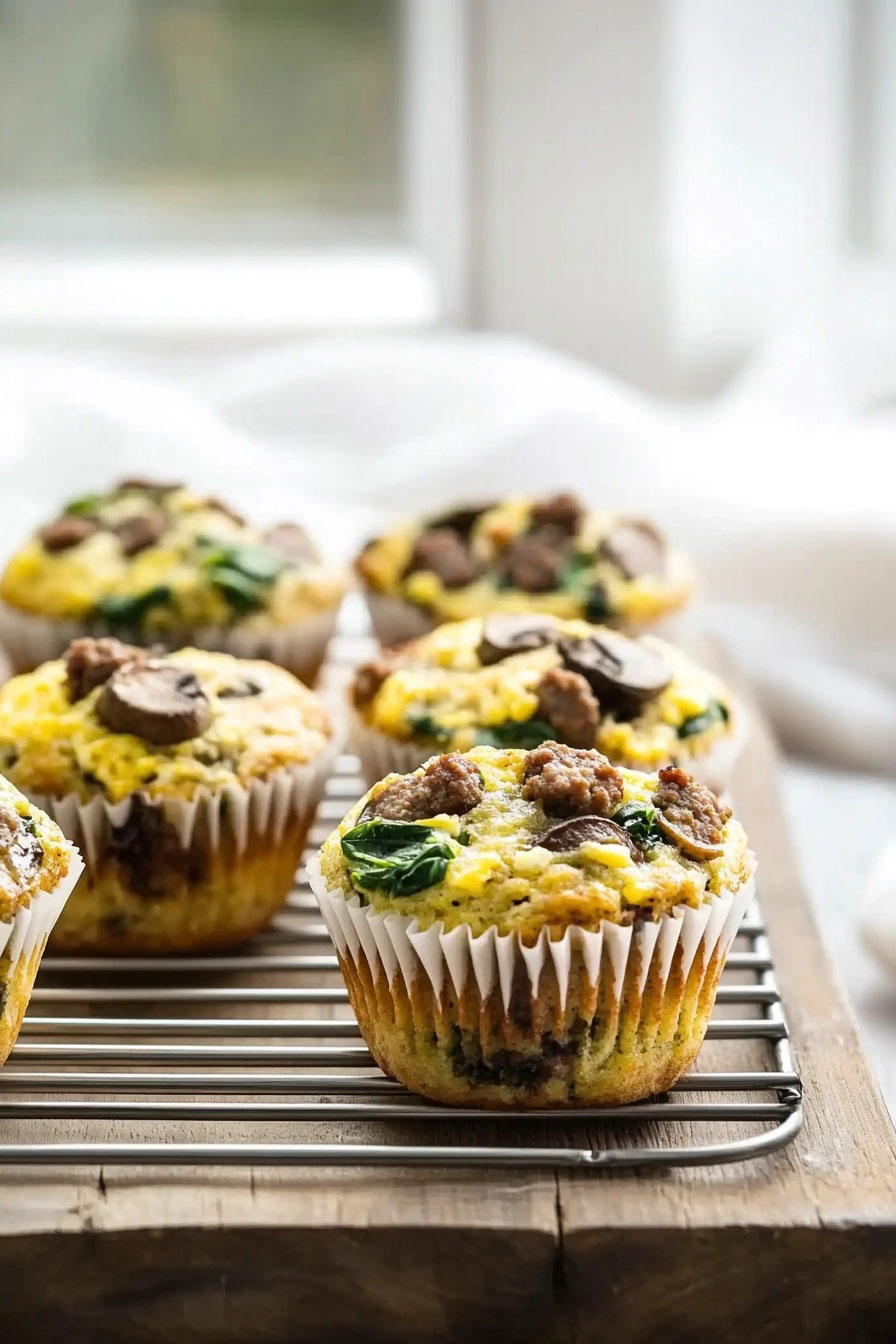A Paleo Frittata is the perfect protein-packed dish that combines the simplicity of eggs with wholesome vegetables for a nutrient-dense meal. This versatile dish works beautifully for breakfast, lunch, or dinner, making it an excellent choice for those following a paleo lifestyle or anyone seeking a healthy, satisfying meal.
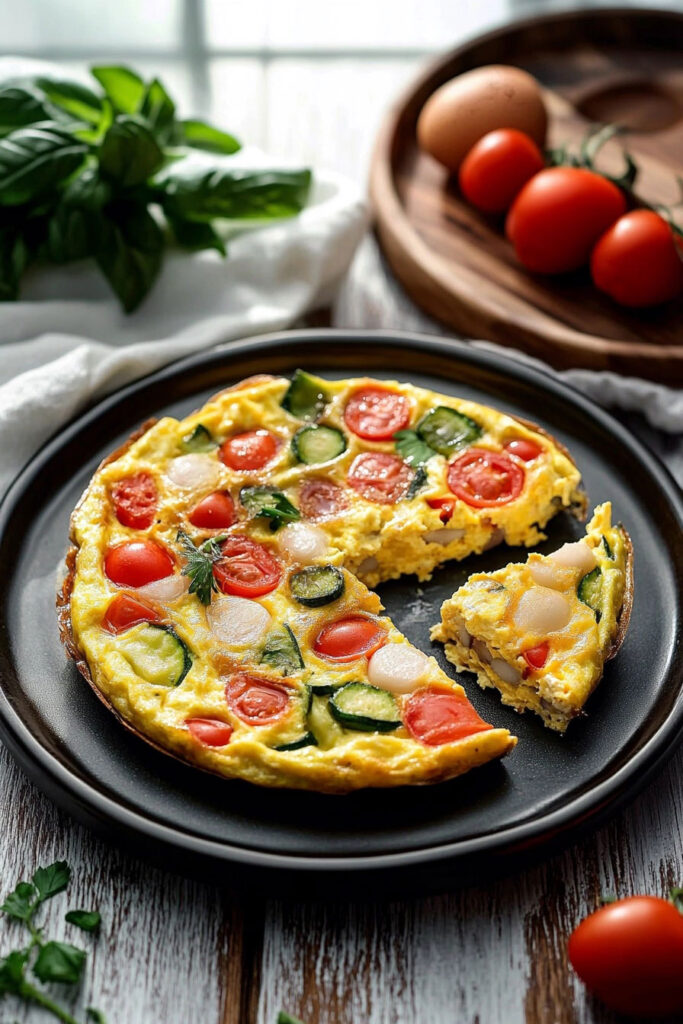
Essential Ingredients
Base Ingredients
- 8 large eggs
- 1/4 cup coconut cream
- 1/2 teaspoon fine sea salt
- 1/2 teaspoon pepper
- 1 tablespoon extra virgin olive oil
Fresh Vegetables
- 1 cup chopped zucchini
- 1 cup chopped fresh spinach
- 1 cup grape or cherry tomatoes (halved)
- 5 tablespoons chopped basil (divided)
Required Kitchen Tools
When preparing a Paleo Frittata, having the right equipment ensures success. Here are the essential tools needed:
- Oven-Safe Skillet: A 10-inch cast iron skillet works best for achieving the perfect crispy edges[1].
- Mixing Bowls: For whisking eggs and preparing vegetables.
- Sharp Knife: For chopping vegetables uniformly.
- Whisk: To blend eggs and coconut cream smoothly.
- Measuring Cups and Spoons: For precise ingredient portions.
- Spatula: For checking the doneness of the frittata.
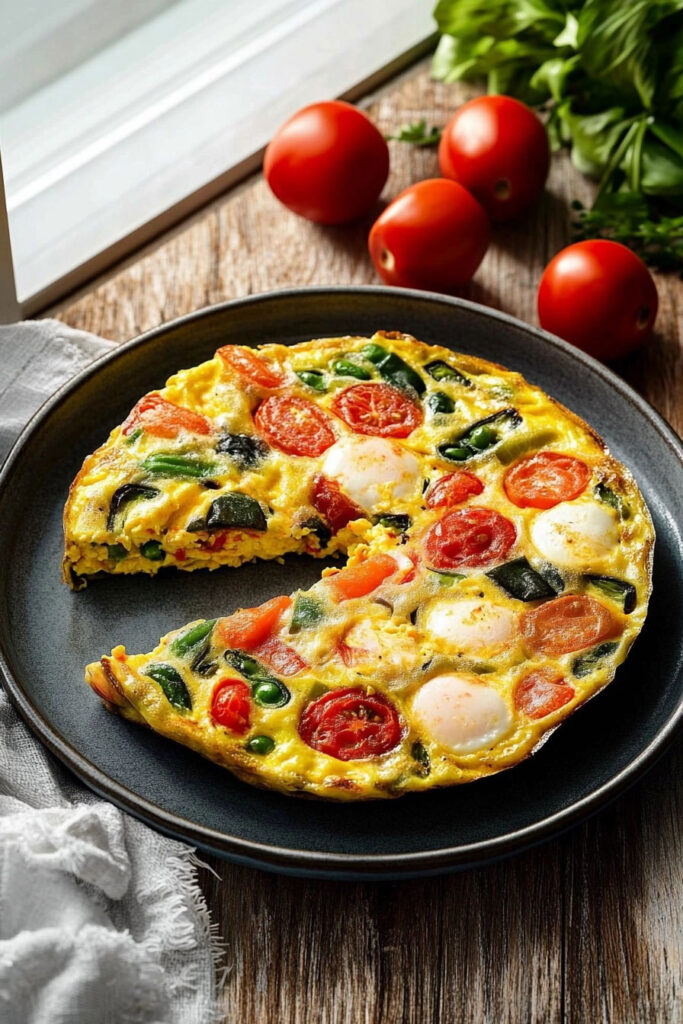
Benefits of Making a Paleo Frittata
A Paleo Frittata offers numerous advantages that make it a popular choice:
Meal Prep Friendly: Can be stored in the refrigerator for up to 3 days, perfect for meal planning[3].
Customizable: Works well with various vegetables and proteins, allowing for endless variations[1].
Nutrient-Dense: Provides essential proteins, healthy fats, and vegetables in one dish[4].
Budget-Friendly: Uses simple, wholesome ingredients that are readily available[1].
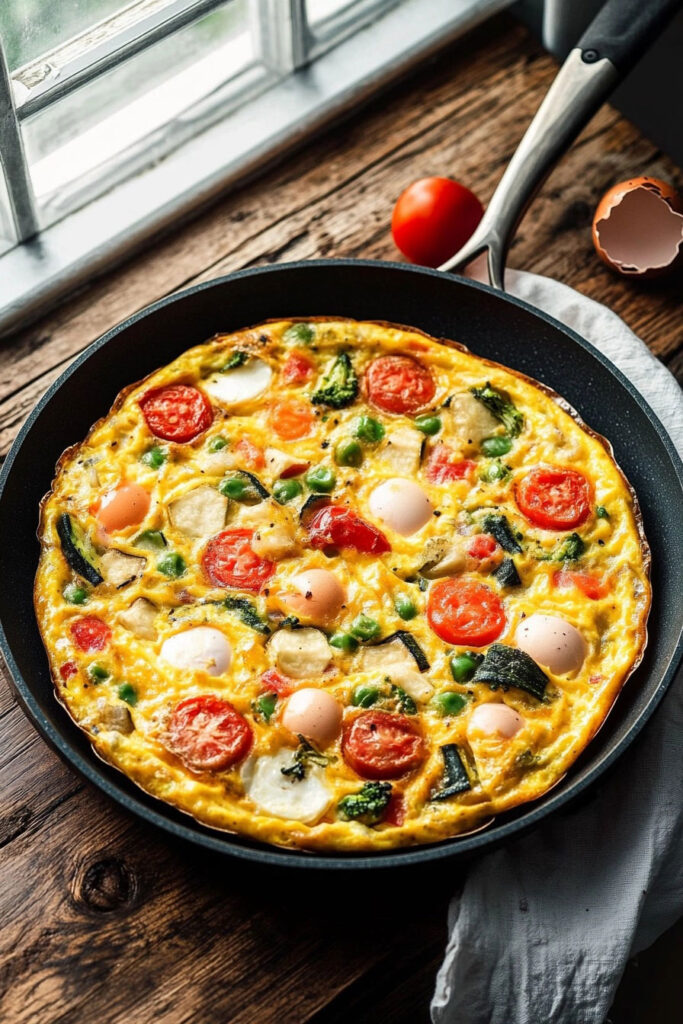
Step-by-Step Preparation
Creating the perfect Paleo Frittata requires attention to detail and proper technique. Let’s break down the process into manageable steps.
Preparing the Base
The foundation of any great frittata starts with properly beaten eggs. Begin by whisking together eggs and coconut cream until well combined. The coconut cream adds richness and helps create a fluffy texture while keeping the dish dairy-free. Season the mixture with sea salt and black pepper for balanced flavoring.
Vegetable Preparation
Proper Cutting Techniques
- Dice zucchini into uniform pieces for even cooking
- Roughly chop fresh spinach leaves
- Halve grape tomatoes lengthwise
- Finely chop fresh basil leaves
Pre-Cooking Components
Before assembling the frittata, certain ingredients need pre-cooking:
- Sautéing Vegetables
Heat olive oil in your skillet over medium-low heat. Add zucchini first, cooking until tender but not browned. This typically takes 4-5 minutes. - Wilting Spinach
Once zucchini is tender, add spinach and cook briefly until just wilted. This prevents excess moisture in the final dish. - Roasting Tomatoes
While vegetables are cooking, broil halved tomatoes for about 5 minutes until slightly charred. This concentrates their flavor and removes excess moisture.
Temperature Control
Maintaining proper temperature is crucial for a perfectly cooked frittata:
Stovetop Phase
- Keep heat at medium-low
- Look for small bubbles forming around the edges
- Cook until eggs are about 75% set
Broiling Phase
- Position rack 6 inches from heat source
- Broil on low setting
- Watch carefully to prevent burning
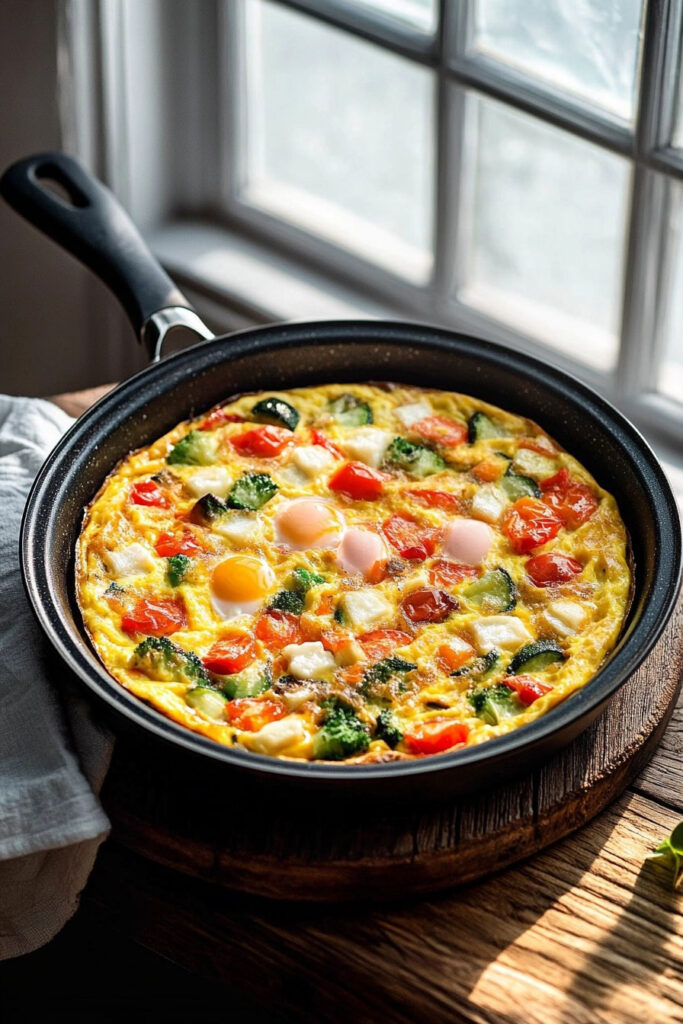
Expert Tips and Troubleshooting
Understanding the nuances of frittata preparation can elevate your dish from good to exceptional. Here are key insights to ensure success.
Common Challenges and Solutions
Preventing a Rubbery Texture
The secret to a tender frittata lies in the cooking temperature and timing. Never exceed medium-low heat during the stovetop phase, as high heat can cause the eggs to become tough and rubbery. The addition of coconut cream helps maintain moisture and creates a silky texture.
Avoiding a Watery Frittata
Excess moisture can ruin the texture of your frittata. Pre-cooking vegetables removes excess water content, particularly important with water-rich vegetables like zucchini and spinach. Always pat vegetables dry before adding them to the egg mixture.
Customization Options
Seasonal Variations
- Spring: Asparagus, peas, and fresh herbs
- Summer: Bell peppers, eggplant, and fresh basil
- Fall: Mushrooms, sweet potatoes, and sage
- Winter: Brussels sprouts, butternut squash, and thyme
Protein Additions
While maintaining paleo guidelines, consider adding:
- Prosciutto
- Ground turkey
- Shredded chicken
- Smoked salmon
Serving Suggestions
Pairing Recommendations
Complementary Side Dishes
- Fresh arugula salad
- Roasted sweet potatoes
- Sautéed mushrooms
- Fresh avocado slices
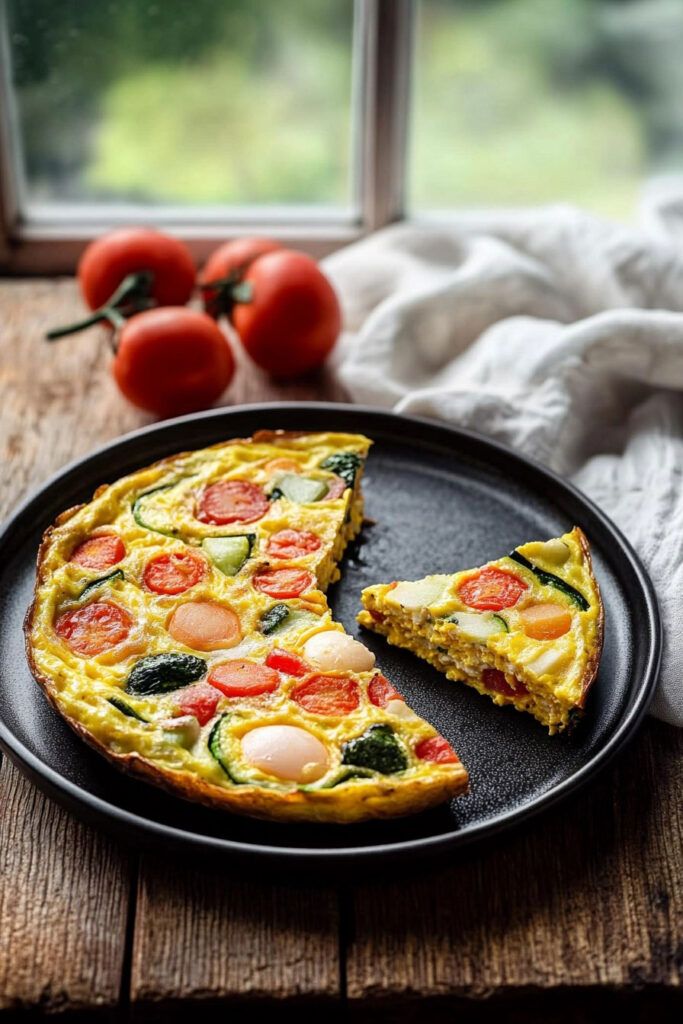
Storage and Reheating
Proper Storage Methods
Store your frittata in an airtight container in the refrigerator for up to 3 days. For best results, slice into portions before storing to prevent excess moisture buildup.
Reheating Guidelines
- Oven Method: Warm at 350°F for 5-7 minutes
- Stovetop Method: Heat in a covered pan on low for 3-4 minutes
- Avoid microwave reheating as it can make the texture rubbery
Frequently Asked Questions
Essential FAQs About Paleo Frittata
Q: Can I make this frittata ahead of time?
A: Yes, you can prepare this frittata up to 3 days in advance. Store it in an airtight container in the refrigerator.
Q: Why use coconut cream instead of dairy?
A: Coconut cream maintains the paleo-friendly status while providing richness and creating a creamy texture similar to dairy.
Q: Can I freeze this frittata?
A: While possible, freezing isn’t recommended as it can affect the texture. If necessary, freeze for up to 1 month and thaw overnight in the refrigerator.
Q: What’s the best skillet size to use?
A: A 10-inch oven-safe skillet is ideal for this recipe, ensuring proper thickness and even cooking.
Nutritional Benefits
Health Advantages of Key Ingredients
Eggs
- High-quality protein source
- Rich in choline for brain health
- Contains lutein for eye health
Vegetables
- Zucchini provides vitamin C and potassium
- Spinach offers iron and antioxidants
- Tomatoes contain lycopene and vitamin A
Conclusion
The Paleo Frittata represents the perfect harmony of simplicity and nutrition, offering a versatile dish that fits seamlessly into any meal of the day. By following this detailed guide, you’ll master the art of creating a perfectly textured frittata that’s both dairy-free and nutrient-dense.

